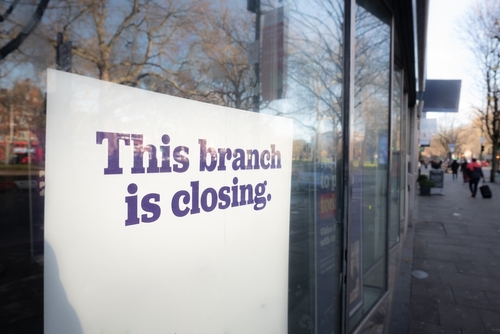
In a sweeping move that has left many communities reeling, PNC Bank has recently closed 19 branches across the United States in a single week. This action is part of a broader trend among major financial institutions, including US Bank, JPMorgan Chase, and Bank of America, which have also been reducing their physical presence, leaving customers questioning the future of in-person banking services.
The closures, which occurred between November 12th and November 18th, have particularly affected Pennsylvania, Illinois, and Texas, with multiple locations shuttered in each state. The Office of the Comptroller of the Currency (OCC) was notified of these changes, as banks are required to do so, but the regulator’s power stops there; they cannot object to the closures.
@Chase There is no other branch for almost 3 miles & this one is locked up! There is no signage about closures or construction. Just a sealed bank. Guess my money is safe after all; even I can’t get to it. pic.twitter.com/pn6g6qilqk
— HolliWoode™ (@HolliWoode) April 16, 2022
US Bank followed closely behind PNC in the number of closures, planning to eliminate seven branches, three of which are located in Tennessee. Citizens Bank targeted six branches for closure, all within New York State. Meanwhile, both Bank of America and JPMorgan Chase have announced the closure of four branches each, though Chase plans to offset its closures by opening 12 new branches.
These closures are part of a disturbing trend that has seen a total of 1,144 national and regional bank branches close their doors from January to July of this year alone. This pattern is not only inconvenient for customers but also raises concerns about the availability of basic financial services, especially in underserved communities.
EXPLOSIVE: ANZ deepthroat exposes deliberate bank deception to close branches
The most revealing line in this explosive story comes from an ANZ supervisor:
"If customers want service, it’s on our terms."
That is the attitude of a cartel! #auspolhttps://t.co/uZRFav3DdE— Australian Citizens Party (@CitizensPartyAU) November 22, 2023
A recent poll highlighted the growing unease among consumers, with over half expressing concern about the dwindling number of bank branches. The survey also shed light on a racial disparity in banking access, revealing that black Americans are less likely to have a local branch compared to their white counterparts.
The impact of these closures extends beyond mere statistics. For many, the local bank branch is more than just a place to conduct transactions; it’s a community hub where relationships are built, and personalized service is provided. The shift towards online banking, while convenient for some, does not meet the needs of all customers, particularly the elderly, those without reliable internet access, or individuals who prefer face-to-face interactions for complex financial matters.
Financial institutions argue that the closures are a necessary response to the changing landscape of banking, with more customers opting for digital services over traditional brick-and-mortar locations. However, this rationale does little to comfort those who rely on their local branches.
As banks continue to pivot towards digital platforms, one must question whether enough is being done to ensure that all Americans have equal access to essential financial services. The industry’s drive for efficiency and cost-cutting should not overshadow the need for inclusivity and community support.
The recent wave of bank branch closures is a stark reminder of the evolving financial sector. While progress and innovation are inevitable, they must be balanced with the responsibility to serve all members of society equitably. As we witness the transformation of our banking system, it is imperative that we advocate for solutions that bridge the gap between the old and the new, ensuring no customer is left behind.










